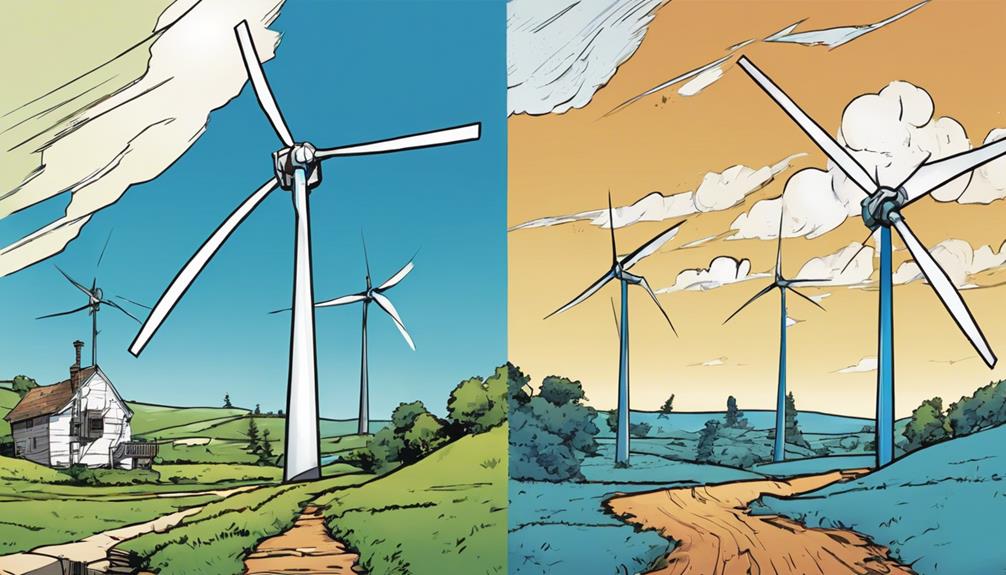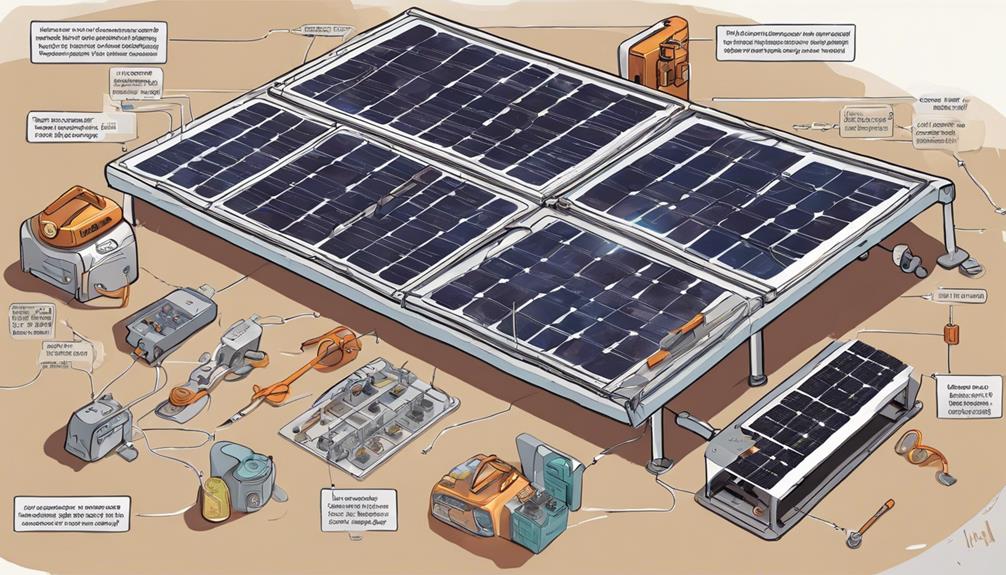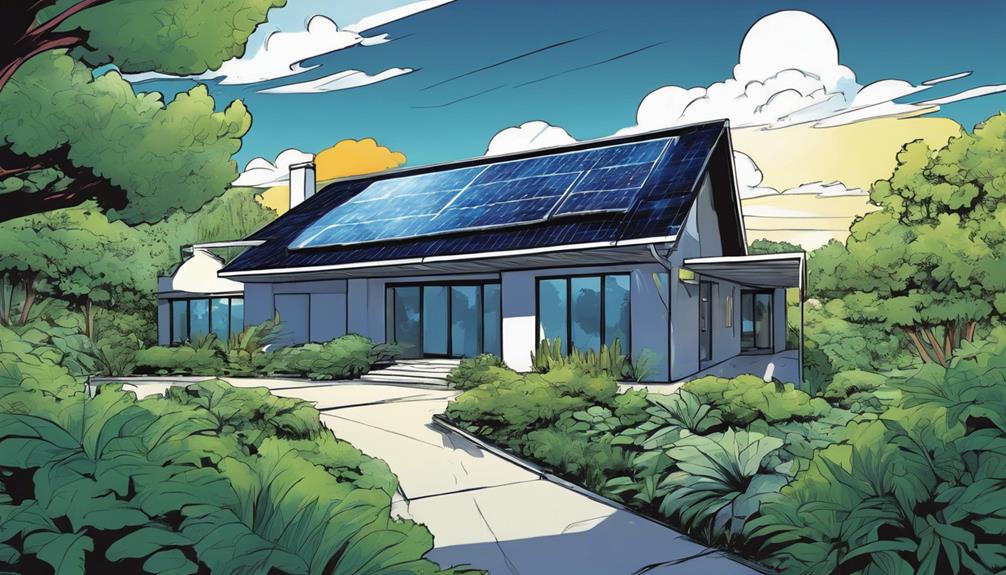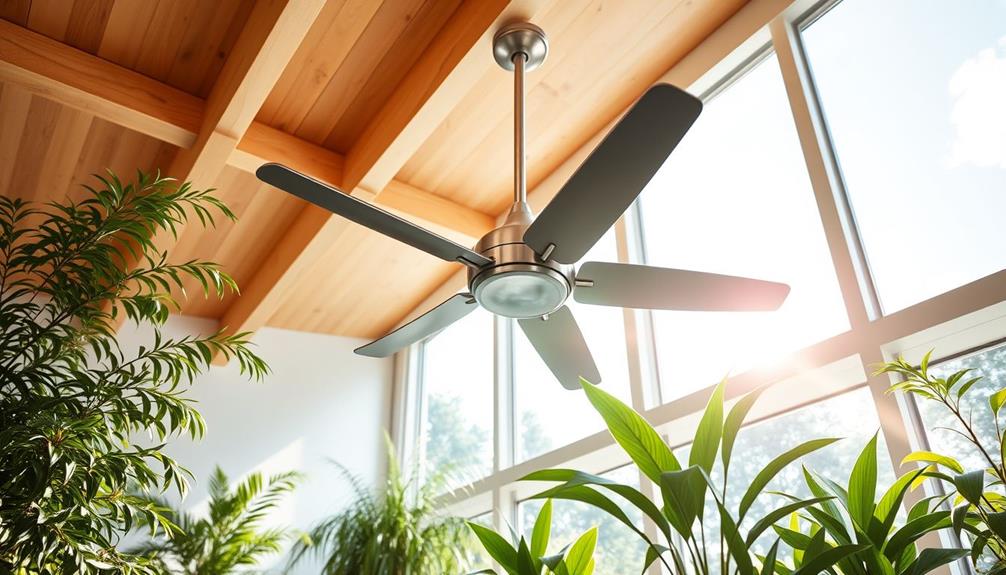You'll need to craft Geothermal Generators using Industrial Craft components and fuel them with lava cells to harness the power of geothermal energy in Minecraft. Connect these generators to a redstone power system, and consider adding solar panels for a hybrid setup. Organize your inventory and gather materials efficiently to optimize your energy production. With a well-planned setup, you'll be generating power in no time. But that's just the beginning – there are many ways to refine your geothermal energy system, and a few clever tweaks can take your production to the next level.
Key Takeaways
- Craft Geothermal Generators using Industrial Craft components and fuel them with lava cells for energy production.
- Connect generators to a redstone power system using cables and MFSU for energy storage and distribution.
- Optimize generator placement and lava supply for continuous 20 EU/t energy output, and consider adding solar panels for a hybrid system.
- Use Equivalent Exchange or Nether resources to sustainably fuel generators with magma, and stock up on magma for a steady supply.
- Implement energy condensers and transmutation tablets to manage energy production and resource conversion efficiently.
Crafting Geothermal Generators
Crafting a Geothermal Generator in Minecraft requires gathering essential Industrial Craft components, including copper, tin, and glass fiber. With these materials, you'll be able to create a powerful energy source that harnesses the power of lava.
You'll need to craft lava cells, which can be used as fuel for your Geothermal Generator. Each lava cell has an EMC value of 128 and will be destroyed in the process, but it's worth it for the energy it provides.
Your Geothermal Generator can hold up to 24 units of lava, producing 20,000 EU per unit at a rate of 20 EU/t. This makes it a reliable and efficient way to generate energy in Minecraft.
As you craft your generator, keep in mind that you'll need to fuel it with lava cells, which can be filled with lava from lava buckets. With your Geothermal Generator up and running, you'll be able to power your Minecraft world with ease.
Setting Up Redstone Power

As you set up your redstone power, you'll need to understand the basics of power generation, including how to use redstone torches to create a reliable energy source.
Next, you'll want to focus on designing an efficient energy storage system to hold excess power.
Power Generation Basics
By the time you've gathered all the necessary components, you're ready to set up a basic redstone power system, leveraging redstone torches, stone anodes, timers, and cables to generate and distribute power. This system will serve as the backbone for your geothermal energy setup.
To begin, connect your power generators, such as geothermal generators or lava cells, to an MFSU (Multi-Functional Storage Unit) using silver, diamond, or glass cables. This will allow you to store excess energy for later use.
Next, plan your power distribution system. You can connect pneumatic tubes with blue alloy wire to distribute power efficiently. Consider building solar panels to supplement your geothermal energy and create a hybrid renewable energy system.
As you set up your power generation basics, keep in mind that you'll need to link your power output to the MFSU for energy storage. With a solid power generation foundation, you'll be ready to immerse into more advanced redstone configurations in the next steps.
Redstone Torch Setup
You'll start building your redstone power system by strategically placing redstone torches to transmit power across your geothermal setup. These torches will help you harness the heat generated by your geothermal energy source.
To set up your redstone torches, follow these steps:
- Place torches along the perimeter of your geothermal setup to create a power grid.
- Connect stone anodes to control the flow of redstone power and prevent overheating.
- Use redstone cables to link your torches and anodes, ensuring a stable power transmission.
Energy Storage Systems
Now that your geothermal setup is powered by redstone torches, it's time to store that energy efficiently with a well-designed energy storage system. You'll need to set up a reliable redstone power system using redstone torches, stone anodes, timers, and redstone cables.
Connect your geothermal generators to silver, diamond, or glass cables to distribute the energy. For efficient energy transfer, power pneumatic tubes with blue alloy wire.
To take your energy storage to the next level, consider linking your power output to an MFSU (Medium Universal Energy Storage) for advanced EU storage capabilities. This will allow you to store excess energy for later use.
You might also want to incorporate an energy condenser into your setup, which can help increase your power generation options. With a well-designed energy storage system, you'll be able to efficiently store and manage the energy generated by your geothermal setup, ensuring a steady supply of power when you need it.
Resource Management Essentials

As you set up your geothermal energy system, you'll quickly realize that managing your resources efficiently is essential.
You'll need to organize your inventory to make sure you have easy access to lava buckets, lava cells, and RE Batteries, and develop a strategy for gathering materials quickly and effectively.
Inventory Organization
By grouping similar items together, such as ores, tools, and building materials, you can efficiently organize your inventory and streamline your resource management. This will save you time and reduce frustration when searching for specific items.
To take your inventory organization to the next level, use chests, barrels, or other storage containers to categorize and store your items efficiently.
Here are three essential tips to keep in mind:
- Label your storage containers: This will help you quickly locate specific items when you need them.
- Prioritize essential items: Keep food, tools, and building blocks in your hotbar for quick access.
- Declutter regularly: Discard or store excess items to free up space for important resources.
As you prepare to harness geothermal energy, remember to organize your Buckets and Lava Cells, and consider using an Energy Condenser and Waterproof Pipes to optimize your energy production. By maintaining a tidy inventory, you'll be able to focus on building your geothermal setup without any hassle.
Efficient Material Gathering
You'll need to gather a variety of materials, including smooth stone, cobblestone, wood, glass, copper, nicolite, tin, and glass fiber, to set up your geothermal energy system efficiently.
Before you start, make certain your furnaces are empty, so you can smelt the necessary materials for crafting components.
Organize your crafted items, such as pistons, filters, retrievers, cables, batteries, and solar arrays, to guarantee efficient progression.
To streamline material gathering and energy generation, plan ahead for your energy condenser setup, collectors, and upgrades.
Consider utilizing a transmutation tablet for resource conversion and efficient resource management. This will help you make the most of your resources and minimize waste.
Remember, generators accept both lava and heat, so you can use the heat from the lava to power your system.
By gathering materials efficiently and planning ahead, you'll be well on your way to setting up a successful geothermal energy system.
With these essentials in place, you can focus on harnessing the power of lava to generate energy for your Minecraft world.
Building Efficient Energy Systems

To optimize your energy output, building efficient energy systems requires careful planning and strategic use of resources.
You'll want to make the most out of your Geothermal Generators, which produce 20 EU/t from lava fuel. To do this, you'll need to ensure a steady supply of lava to keep your generators running.
Here are three key considerations to keep in mind when constructing your energy system:
- Infinite power with Equivalent Exchange: By supplying your Geothermal Generator with EE lava, you can generate infinite power. This eliminates the need for constant lava refueling and guarantees a continuous energy output.
- Easy access with Teleport Pipes: Installing Teleport Pipes allows you to easily access large lava lakes in the Nether, providing a virtually unlimited source of energy.
- Optimize your generator placement: Strategic placement of your Geothermal Generators can significantly influence your energy output. Experiment with different layouts to find the most efficient setup for your needs.
Advanced Power Generation Tips

Your power generation setup can reach new heights with these advanced tips, which focus on maximizing energy output and efficiency.
Upgrade your collectors to Mark III level to optimize energy production in your power flower setup.
To generate electricity, utilize geothermal power generation by setting up geothermal generators with buckets of lava, providing a nearly infinite power source.
Customize your MFSU setup with advanced machine blocks to accommodate large energy storage capacities, utilizing internal storage that's stackable and therefore require minimal space.
Optimize your power generation setup by connecting generators with silver, diamond, and glass cables for efficient energy transfer.
By implementing these advanced tips, you'll be able to generate power efficiently and effectively.
Don't forget to share details of your advanced power generation setup on social media platforms to showcase your creativity and encourage community engagement.
With these advanced power generation tips, you'll be well on your way to creating a robust and efficient geothermal energy system in Minecraft.
Geothermal Energy Strategies

Now that you've optimized your power generation setup, it's time to develop a geothermal energy strategy that leverages the vast potential of lava as a fuel source. Geothermal generators are the key to harnessing this energy, and understanding how to use them efficiently is pivotal.
Here are three essential strategies to maximize your geothermal energy output:
- Tap into the Nether's resources: The Nether offers almost infinite lava resources, making it an ideal location for setting up your geothermal generators.
- Use teleport pipes for easy access: Teleport pipes can connect your generator to large lava lakes, providing a constant fuel supply.
- Optimize your lava storage: Geothermal generators can store up to 24 units of lava, so make sure to feed them with lava buckets initially and explore Equivalent Exchange for efficient power generation.
Troubleshooting Common Issues

Troubleshooting Common Problems
Most geothermal generator issues arise from misconfigured modules or version incompatibilities, so it's vital to double-check these potential culprits first. You should verify that your Geothermal Generator's module configuration and installation are correct to guarantee proper functionality.
| Common Problems | Troubleshooting Steps |
|---|---|
| Not functioning as expected | Review installation and module configuration |
| Incompatibility errors | Check Minecraft and Forge version compatibility |
| Unreported problems | Search GitHub repository for similar issues |
| Persistent problems | Seek help from the Minecraft community or developers |
If you've double-checked these potential causes and the issue persists, review the specific details of the problem to pinpoint potential causes. You can also check the GitHub repository for any reported problems or discussions that may have solutions. If none of these steps resolve the issue, don't hesitate to seek assistance from the Minecraft community or developers. By following these troubleshooting steps, you should be able to identify and fix common Geothermal Generator problems, ensuring a smooth and efficient geothermal energy setup.
Optimizing Power Generation Setup

With your geothermal generator up and running, it's time to fine-tune its performance by implementing strategies that maximize energy output efficiency. You've overcome the initial hurdles, and now it's time to squeeze every last bit of power out of your setup.
To optimize your power generation, consider the following:
- Upgrade your geothermal generators: Better generators mean more energy per lava bucket, making your setup more efficient.
- Utilize lava buckets or cells: These allow for continuous and sustainable power generation, minimizing downtime and maximizing output.
- Implement automation systems: Connect your generators to storage units like MFSUs for energy backup, and use automation to manage lava supply for uninterrupted power.
Maximizing Energy Output

By strategically fueling your geothermal generator, you can unlock its full potential and maximize energy output. Using magma as fuel, your generator will produce 20 EU/t, with each magma unit lasting 50 seconds.
To guarantee a steady energy supply, stock up on magma buckets or consider using magma cells or pumped magma. For an almost infinite energy source, set up an efficient system using Equivalent Exchange or Nether methods. This way, you can generate power without worrying about running out of fuel.
To take it a step further, consider supplying your geothermal generator with EE magma for a sustainable source of power. This won't only maximize energy output but also reduce the need for constant refueling. With a transmutation tablet, you can convert other materials into magma, making it easier to maintain your energy setup.
Frequently Asked Questions
How to Power a Geothermal Generator in Minecraft?
You're wondering how to power a geothermal generator? To get started, you'll need to provide it with lava as fuel, which can be done using lava buckets or lava cells, ensuring a steady energy supply.
Can You Get Geothermal Energy?
"Of course, you can get geothermal energy… in the real world, that is. But let's be real, you're playing Minecraft, so yeah, you can get it in-game too, using lava and Geothermal Generators, duh!"
How to Get Energy in Sky Factory?
You're trying to figure out how to get energy in Sky Factory. To start, create a system that pumps lava into Geothermal Generators using Transfer Nodes and Pipes, and consider Cobblestone Generators for an infinite lava source.
How Much Does a Geothermal Generator Cost?
You're wondering how much a geothermal generator costs? Well, let's break it down – there's no monetary cost, but you'll need refined iron, tin, and a generator, which you'll gather through mining, smelting, and crafting.
What is the process for creating geothermal energy in Minecraft?
In Minecraft, creating geothermal energy involves finding a lava pool and using a bucket to collect lava. Then, constructing a geothermal generator and placing it next to the lava pool to convert the lava into energy. The geothermal energy ROI impact factors include the efficiency of the generator and the proximity to the lava source.
Conclusion
As you harness the power of geothermal energy, remember that it's not just about generating power – it's about taming the fiery heart of the earth.
Just as lava flows beneath the surface, waiting to be tapped, your creativity and resourcefulness can reveal the secrets of efficient energy production.
Now, go forth and illuminate your Minecraft world, fueled by the burning passion of innovation.










